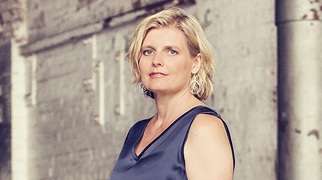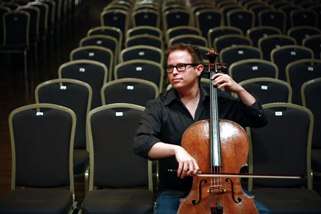|
Back
Intimate Beethoven Melbourne
Elisabeth Murdoch Hall, Melbourne Recital Centre
09/26/2016 - & September 23, 2016 (Newcastle)
Wolfgang Amadeus Mozart: String Quintet in G minor, K. 516 (*)
Ludwig van Beethoven: String Quartet no. 15 in A minor, Op. 132
Members of the Australian Chamber Orchestra: Helena Rathbone, Liisa Pallandi (Violin), Nicole Divall, Alexandru-Mihail Bota (*) (Viola), Timo-Veikko Valve (Cello)

H. Rathbone (© Courtesy ACO)
The glowing timber interior of the Melbourne Recital Centre’s Elisabeth Murdoch Hall offers a perfect space to experience music and musicianship up close. This exquisite venue was filled for the second and final performance of the chamber program designed by Australian Chamber Orchestra Principal Cellist Timo-Veikko (“Tipi”) Valve.
This chamber concert was an opportunity to hear a few of the outstanding musicians of the ACO working in a small, intimate ensemble, a challenge in which they clearly revelled as could be seen in their constant smiles and knowing glances at one another. Billed as a program of “haunting treasures”, this concert was clearly personal. Each of the artists, accomplished soloists in their own right invested it with sincerity and passion.
The Mozart G Minor Quintet was first piece of the concert. Lead by ACO Principal Violinist Helena Rathbone, the four movements achieved a wonderful unity across their greatly varied tempi and moods. Despite the ensemble’s clear enjoyment of playing this music, there was an underlying pathos inherent in the piece which came to the fore. From the softly melancholic strains of the opening movement, to the almost yet not quite resolved emotional struggle of the finale, the performers drove the music forward with a force bordering upon urgency. It felt as if the writer of the music was being driven into an inescapable sadness, a deep and mournful examination of inner conflict.
The playing of all five musicians in this piece was controlled, confident and highly detailed. They wove a magical, ephemeral cloak of sound achieving unity within the details of the demands upon the soloists. Far from being a series of disconnected movements, the performance offered a synthesis of ideas and formed a many-faceted essay on emotional intensity.
The reaction of the audience at the conclusion of the piece was thunderous, calling the ensemble back multiple times to show their appreciation.

T.-V. Valve (© Jussi Sippola)
Returning to the podium after interval, the performers were again rewarded with warm applause before Timo-Viekko Valve addressed the audience. He jokingly mentioned that the Beethoven piece was the kind of item which an established Quartet might include on a 20th Anniversary program. But here were these close colleagues, not a recognised Quartet, with only a few days of preparation, attempting to “climb Mount Everest”. Again it was clear that this program was one in which the participating artists have invested a great deal of themselves.
The five movements are diverse in approach and tone and yet achieve a whole similar to the Mozart Quartet. There is a ‘driven’ quality to the opening section which presses personal concerns, doubts and seriousness. It becomes an examination of the mind of the composer in this last but highly creative phase of his life. He contemplates the limitations of music to express the deepest of uncertainties and misgivings. By the time the piece progresses to its lyrical third movement, we are drawn ever deeper into the composer’s inner self: a product of his profound deafness and increasing despair over serious illness.
We too, fall to contemplation and internalising our thoughts throughout this work. There is no other interpretation possible than to see this piece as an examination of what it is to be mortal, frail and deeply troubled. Yet there are glimpses of hope and redemption as the final movement resolves the shadows of anxiety and trauma of the earlier portions.
The performance must be led by the Cellist and here Mr. Valve shone dark and rich throughout. The violin of Helena Rathbone, frequently sung over the deep sonority of the undercurrent. Liisa Pallandi’s second violin shone brightly too in the many passages where the lead was swapped between the two instruments. Nicole Divall’s viola playing was opulent and plush, providing a wonderfully unifying sound bridge between the upper and lower registers of the ensemble.
Again, at the conclusion of the performance, the applause was tumultuous. The group returned many times to the platform to receive their congratulations. This superb concert was a welcome insight into the personal passions of the players as well as into the minds of these two most beloved composers.
Gregory Pritchard
|